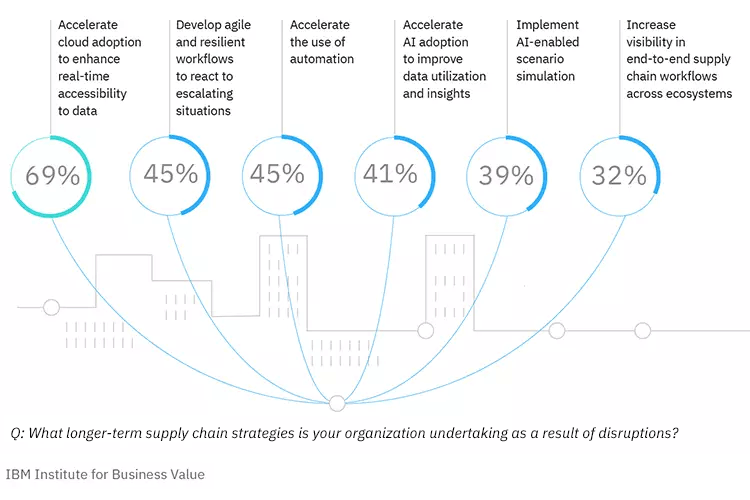Building a digital supply chain has become a necessity for organizations today and it starts with integrations. A critical element of building digital supply chains is integrating key platforms and technologies. This helps to create an agile, responsive, and scalable organization and lays a strong foundation for growth.Traditional supply chains with dependencies on manual processes, siloed technologies, and complex infrastructures will no longer work in today’s digital-first world. Teams found that out the hard way in the past few years and need to focus on business agility to succeed.
What is a digital supply chain?
A digital supply chain “develops and applies technologies to automate, integrate, and illuminate all processes including data capture, communications, analyses, decision-making, transactions, and transformations,” according to the report,
How to build a digital supply chain.Traditional supply chains plan and react, versus predict and prescribe actions to take according to
Netsuite. Digital supply chains ensure that organizations are more responsive, agile, and scalable. Automating intelligent workflows helps organizations improve customer satisfaction, but also helps them stand out from the competition. In fact, 53% of chief supply chain officers indicate that
transformation of the digital supply chain may be their most important competitive advantage over the next three years.
Why Focus on Integration?
Integration of platforms and solutions across the enterprise enables scale and drives efficiency. It also reduces the costs of developing, testing, and maintaining applications. Integrating business platforms like customer relationship management (CRM) to
product information management (PIM) solution to
digital asset management (DAM) is complex when relying on custom code and point-to-point integrations.Integration of technologies across the enterprise also improves collaboration and coordination with key stakeholders. This helps improve the effectiveness of internal and third-party service providers. However, with the expanding tech landscape, integrations of this scale take time to implement and even more to maintain.
 https://www.ibm.com/thought-leadership/institute-business-value/en-us/report/digital-supply-chain
https://www.ibm.com/thought-leadership/institute-business-value/en-us/report/digital-supply-chainValue of No-Code or Low-Code Integrations
The use of low-code or no-code integration platforms helps solve the challenge of complexity and time to value for organizations,
according to Forbes. A low-code or no-code solution means that non-IT professionals can also be part of the development, implementation, and integration process. Less reliance on IT and developers means faster time to value. It also means that IT and development teams can focus on high-value work instead of spending critical time on work that others may now do.Additionally, the scalability and reliability of custom-built, point-to-point solutions are problematic. Maintaining them becomes expensive and often causes breaks in the supply chain during peak usage times. Reliability and scalability are critical for supply chains. There is a better way to meet the demands of a digital supply chain other than custom or point-to-point solutions.
Integration platform as a service (iPaaS)
Taking no-code or low-code integrations a step further is the concept of integration platform as a service (iPaaS). This combines all the advantages of the integration with no-code and low-code functionality. It is a cloud-based platform that comes with pre-built connectors to key applications so you can work seamlessly with other platforms and solutions, out of the box.An iPaaS solution lets you share data, collaborate with different teams, and leverage the functionality of different applications via one platform. It removes the complexity of point-to-point integrations, and as a cloud platform, removes the costs and inefficiencies associated with downtime and updates.Building and maintaining the digital supply chain is complex. However, when you leverage integrations at scale with an iPaaS solution, you reduce the complexity and risk that come with custom code and point-to-point integrations.The iPaaS solution from
OneTeg offers no-code integrations that solve the most common challenges when building and maintaining a digital supply chain. Integrating platforms and applications is key to business agility and growth. Leverage the power of OneTeg to ensure you accomplish this at scale, without the need for custom code or point-to-point integrations.Explore the existing
Connectors and integrations here to get started and visit OneTeg at the upcoming
DAM LA event in March to see it in action.
 https://www.ibm.com/thought-leadership/institute-business-value/en-us/report/digital-supply-chain
https://www.ibm.com/thought-leadership/institute-business-value/en-us/report/digital-supply-chain